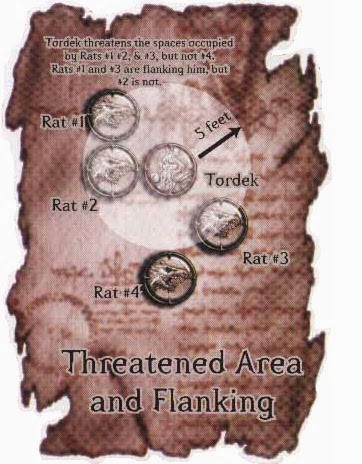The Academy of Adventure Gaming Arts and Design Announces 37th Annual Origins Awards Nominees
COLUMBUS, OH (April 13, 2011) The Academy of Adventure Gaming Arts and Design is proud to announce the nominees for the 37th Annual Origins Awards.
The Origins Awards are presented annually by the Academy of Adventure Gaming Arts and Design to recognize outstanding achievement in design and production of games and game related products.
The nominees were voted on by hobby game retailers at the GAMA Trade Show in March 2011 from a short list in each category determined by a jury of hobby game professionals and knowledgeable enthusiasts. The winner of each category will be determined by the votes of attendees at the Origins Game Fair in Columbus OH, June 22nd-26th. The winners will be announced and the coveted Calliope statues presented at the Origins Awards Ceremony on the evening of Saturday June 25th. Submitted games that were not nominated will be available to play in the Open Gaming Area at the Origins Game Fair.
In the next couple of days, I'll be providing descriptions and reviews of the products that received nominations this year as well as making some comments regarding those who opted not to submit their products for consideration. For example...Black Gate Magazine has published media tie-in stories and regularly publishes reviews. Why didn't they submit for game related publication? Let the retailers decide if you warrant a nomination, but submit for goodness' sake.
This year's nominees are quite strong. For the first time ever, I think that every nominee in the best RPG category deserves to win an award. As I wrote earlier, there will be more praise lavished upon the nominees in the days to come. For now, let's just have a look at that list.
BEST ROLEPLAYING GAME
DC Adventures - Green Ronin Publishing
Designer: Steve Kenson
Dragon Age, Set 1 - Green Ronin Publishing
Designer: Chris Pramas
The Dresden Files RPG: Your Story - Evil Hat Productions
Designers: Leonard Balsera, Jim Butcher, Genevieve Cogman, Robert Donoghue, Fred Hicks, Kenneth Hite, Ryan Macklin, Chad Underkoffler, Clark Valentine
Fiasco - Bully Pulpit Games
Designer: Jason Morningstar
Gamma World RPG - Wizards of the Coast
Designers: Rich Baker, Bruce Cordell
BEST ROLEPLAYING SUPPLEMENT
A Song of Ice and Fire Campaign Guide (A Song of Ice and Fire RPG) - Green Ronin Publishing
Designers: David Chart, Joshua Frost, Brian Kirby, Jon Leitheusser, Anthony Pryor, Robert J. Schwalb, Owen K.C. Stephens
Our World (The Dresden Files RPG) - Evil Hat Productions
Designers: Leonard Balsera, Jim Butcher, Genevieve Cogman, Robert Donoghue, Fred Hicks, Kenneth Hite, Ryan Macklin, Chad Underkoffler, Clark Valentine
Advanced Player's Guide (Pathfinder RPG) - Paizo Publishing
Designers: Judy Bauer, Jason Bulmahn, Christopher Carey, James Jacobs, Steve Kenson, Hal Maclean, Rob McCreary, Erik Mona, Jason Nelson, Stephen Radney-MacFarland, Sean K. Reynolds, F. Wesley Schneider, Owen K.C. Stephens, Lisa Stevens, James L. Sutter, Russ Taylor, Vic Wertz
Sixth World Almanac (Shadowrun RPG)- Catalyst Game Labs
Designers: Jason Hardy, John Heifers, John Dunn
Sunward: The Inner System (Eclipse Phase RPG) - Posthuman Studios
Designers: Rob Boyle, Brian Cross, Adam Jury
BEST BOARD GAME
Castle Ravenloft - Wizards of the Coast
Designer: Bill Slaviciek, Mike Mearls
Defenders of the Realm - Eagle Games
Designer: Richard Launius
Fresco - Queen Games
Designer: Wolfgang Panning, Marco Ruskowski, Marcel Süßelbeck
Lords of Vegas - Mayfair Games
Designer: James Ernest, Mike Selinker
Nuns on the Run - Mayfair Games
Designer: Fréderic Moyersoen
BEST TRADITIONAL CARD GAME
Ascension: Chronicle of the Godslayer - Gary Games
Designer: Justin Gary
Back to the Future: The Card Game - Looney Labs, Inc.
Designer: Andrew Looney
Hecho - Glowfly Games
Designers: Brian Knudsen, Brent Knudsen
Hex Hex XL - Smirk & Dagger Games
Designers: Curt Covert, Justin Brunetto
Railways of the World: The Card Game - Eagle Games
Designer: James Eastham, Steve Ellis
BEST FAMILY, PARTY, OR CHILDREN'S GAME
Ligretto Dice - Playroom Entertainment
Designers: Inka Brand, Markus Brand
Telestrations - USAopoly, Inc.
Designer: USAopoly
Wits and Wagers Family Edition - North Star Games
Designer: Dominic Crapuchettes
Word on the Street Junior - Out of the Box Publishing
Designer: Jack Degnan
Zombie Dice - Steve Jackson Games
Designer: Steve Jackson
BEST GAMING ACCESSORY
Color Primer: Dragon Red - The Army Painter
Designer: Bo Penstoft, Jonas Faering
Adventurers Tiles - Battle Bunker Games
Designer: Tony Ironmonger, Daniel Hinkle
Battlefield XP Swamp Tufts - The Army Painter
Designer: Bo Penstoft, Jonas Faering
Cthulhu Dice Bag - Steve Jackson Games
Designer: Alex Fernandez
BattleTech Hex Pack: Lakes & Rivers - Catalyst Game Labs
Designer: Randall N. Bills
BEST MINIATURES RULES
Adventures in the Lost Lands - Two Hour Wargames
Designer: Ed Teixeira
BattleTech Technical Readout: 3085 - Catalyst Game Labs
Designer: Joel Bancroft-Conners
DC HeroClix Blackest Knight Starter Game - WizKids/NECA
Designers: Eric Engelhard, Jake Theis, Norman Barth, Drew Nolosco
Hordes: Primal MK2 - Privateer Press
Designer: Matt Wilson
MERCS Games Rule - MERCS Miniatures, LLC
Designer: Brian Shotton
BEST HISTORICAL BOARD GAME
Warlords of Europe - GameBuilders
Designers: Ken Griffin, Kyle Battle, Russ Rupe
Conflict of Heroes: Price of Honour Poland 1939 - Academy Games
Designer: Uwe Eickect
Catan Histories - Settlers of America: Trails to Rails - Mayfair Games
Designer: Klaus Teuber
Panzer General: Allied Assault - Petroglyph Games, Inc.
Designers: Chuck Kroegel, George Chastain
BEST GAME-RELATED PUBLICATION
No Quarter Magazine - Privateer Press
Editors: Matt Wilson, Aeryn Rudel, Privateer Press
Hamlet's Hit Points - Gameplaywright
Author: Robin Laws
Family Games: The 100 Best - Green Ronin Publishing
Editor: James Lowder
Shadowrun: Spells and Chrome - Catalyst Game Labs
Editor: John Helfers
World at War: Revelation - Lock ‘n Load Publishing
Author: Mark H. Walker





































